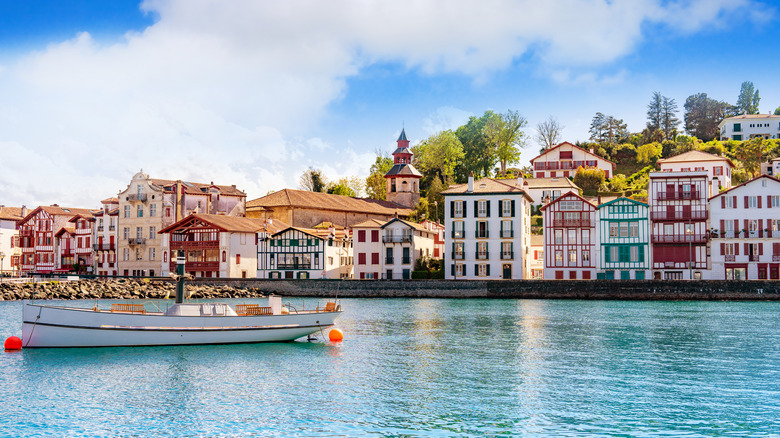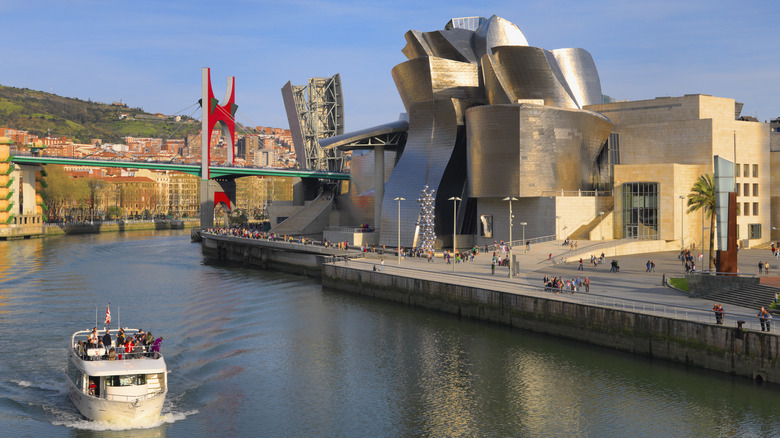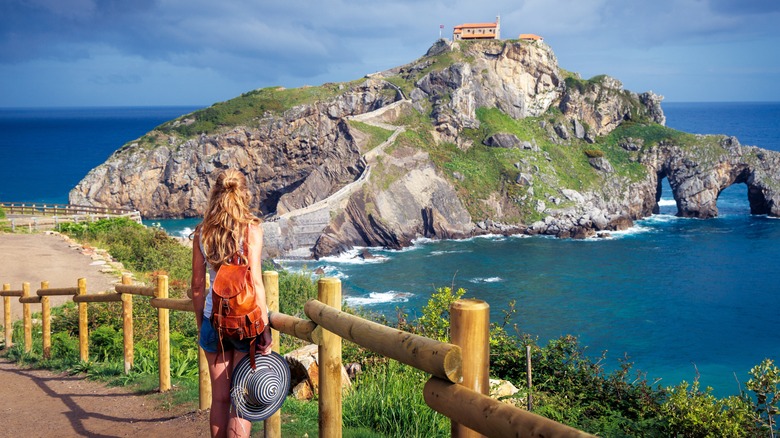'Europe's Premium Blend' Is An Underrated Beauty Between Spain And France, Per Rick Steves
There are about 45 countries in Europe (though the number can vary depending on who you ask), but this count doesn't do the Basque Country region much justice. The area, shared between part of northern Spain and a small portion of southern France, has its own distinct culture and character. A small but mighty minority from the region even want independence, particularly on the Spanish side.
While Basque Country may be overshadowed by Madrid, Barcelona, Paris, and other famous destinations, Rick Steves argues it deserves a spot on more European travel itineraries. The PBS host and guidebook author wrote about Basque Country in an article on his website, referring to the area as "Europe's Premium Blend." According to Steves, a trip to the territory offers a mix of "urban, rural, cultural, and culinary activities." In other words, there's something for every type of traveler. There's the stunning coastline connecting the Spanish side to the French side, developed hubs such as Bilbao and Bayonne, world-class museums, and addictive local dishes.
From Bilbao to Biarritz, there's so much to see and do in Basque Country
As Rick Steves writes, you'll find Basque Country's characteristic flair no matter which towns in the region you visit. In Spain, San Sebastián is the main tourist spot, known for its stunning views of the Bay of Biscay and its charming old town. About a one-hour drive to the west is Bilbao, a city where the old meets the new. Check out the sleek and shiny architecture of the Guggenheim Museum, walk along the iconic bridges, and stroll the traditional streets of the historic "siete calles" neighborhood.
Cross the border and you'll notice a mix of Basque and French influences. One of the first stops you'll reach in France is Saint-Jean-de-Luz, Steves' preferred place to stay, which he described as a "central, comfy, and manageable resort village." Drive 30 minutes up the coast and you'll reach Biarritz, a swanky town favored by elites and surfers alike and home to one of the most amazing beaches in Europe. You'll also find Bayonne nearby, a city packed with characteristic old buildings and photogenic scenery. Steves notes the Musée Basque, a museum where you can learn more about the French Basque culture and region.
When in Basque Country, be sure to spend some time relaxing at one of the many beaches dotting the coastline. Another must-do: Sampling the local food. Pintxos, or small tapas-style dishes, are a great way to try multiple flavors and ingredients in a single meal. Specifically, Steves says to be on the lookout for recipes using local cod and red peppers, two specialties of the region.
Planning your trip to Basque Country
You could easily spend an entire week (or longer) on vacation in Basque Country, getting acquainted with the vibrant culture and lounging around on the sand. However, if you're short on time, Rick Steves suggests devoting at least one day to each country. Choose one Basque town as your base and spend one day on the Spanish side and one day on the French side.
The most efficient way to get around and see as many sites as possible is to rent a car in Europe. This gives you complete freedom and ensures you aren't wasting hours for coach buses or overspending money on taxi rides. However, keep in mind that you may need to pay a fee at the border when traveling between Spain and France. To reach Basque Country from another destination, choose between driving, taking a bus or train, or flying. A train connects Paris to Biarritz and Madrid to Bilbao, while routes to other Basque Country towns may require a bus or other form of transportation. If you're coming from further away, research flights into one of the Basque airports. There are air hubs in Bilbao, San Sebastián, Biarritz, and Vitoria-Gasteiz.


